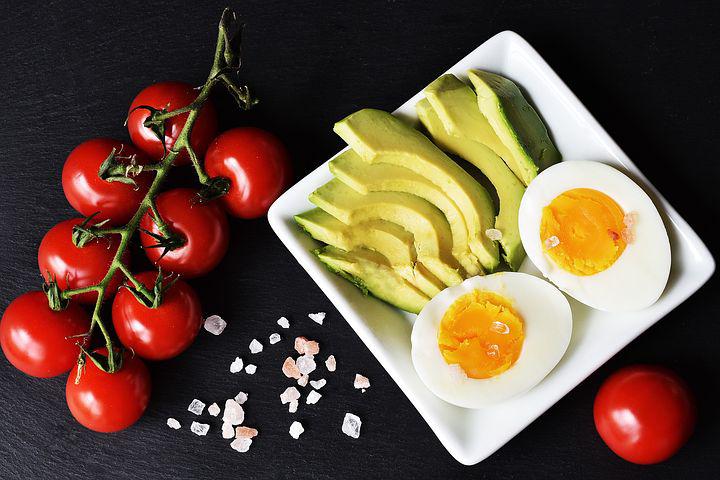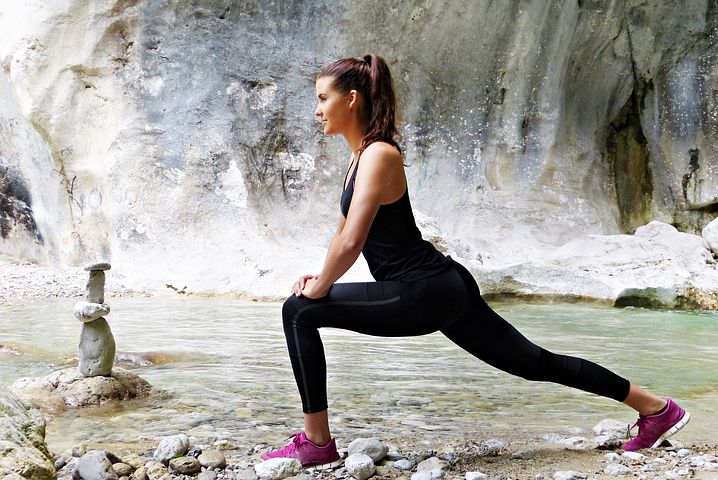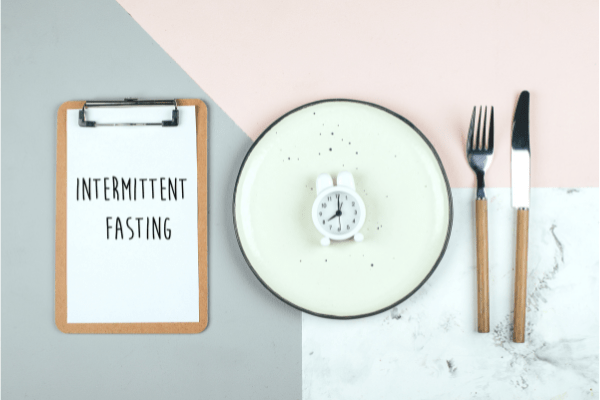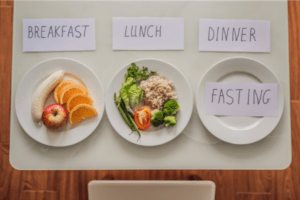Your cart is currently empty!
Category: Health & Wellness
-

Intermittent Fasting Plan for Women
Women’s Intermittent Fasting Plan
There’s no denying that intermittent fasting is popular these days. However, many individuals are unaware that there are some substantial variations in how intermittent fasting affects men and women. What makes intermittent fasting unique for women? It’s partly due to their distinct biology. Women often have a larger amount of fat on their bodies than males (1). This implies that they store more energy as fat. This increased energy reserve might be useful during fasting times. However, women have a slower metabolic rate than males, making it more difficult to lose fat (2).
Another issue is that female bodies are more sensitive to the hormone leptin, which aids in appetite regulation (3). This implies that women may find it more difficult to adhere to a fasting program and are more prone to experience hunger sensations during a fast. This is not to say that people should not attempt intermittent fasting. It simply implies that the protocol should be tailored to the lady, and she should pay attention to her body’s hunger signals during fasting.
Women’s intermittent fasting outcomes may differ from month to month due to hormonal variations. Because of these reasons, women must approach intermittent fasting differently than males. When done properly, however, intermittent fasting may be a potent tool for increasing weight reduction, enhancing energy levels, and mood stabilization.
Women must be cautious not to overdo it with fasting; doing so might result in hormonal abnormalities. Fasting may, however, assist with certain health conditions caused by hormonal imbalances. In the case of polycystic ovary syndrome, for example (PCOS). PCOS is a syndrome in which the ovaries create an abnormally large quantity of male sex hormones. To cut a long story short, this may lead to infertility, and since many women with PCOS are insulin resistant, they may gain weight (4). Fasting may be quite effective in reducing insulin resistance in women. This has the unintended consequence of assisting them in losing weight. Even better, it may increase a woman’s chances of becoming pregnant (5).

Menopause is a hormonal alteration that occurs in women beyond the age of fifty. During this point in their life, many women accumulate weight (6). This is a time when ladies may benefit from intermittent fasting to reduce weight.
Fasting, on the other hand, might have a detrimental impact on blood sugar regulation (7). It may also have an impact on reproduction (8) since it might decrease or halt menstruation (9). However, this is frequently when women go too far and fast for an extended period of time while also drastically reducing the number of calories they consume.
Take things slowly.
If you are a woman, the ideal method for intermittent fasting is to start gently. Pay attention to how your body reacts and adapt your fasting strategy accordingly. Baby stages are the greatest way to ease into an intermittent fasting routine. Begin with one day every week to begin.
Start with a short fast and build up.
Fasting for twelve hours and eating for the remaining twelve hours is an excellent place to start. You may then go fasting on alternate days the following week. Increase the days of fasting until you are conducting a twelve-hour fast every day. As long as you haven’t experienced any negative side effects, gradually increase your fasting period while decreasing your eating time by one hour at a time. An optimum fasting period is sixteen hours, with the remaining eight hours spent eating.
Do not fast for longer than twenty-four hours.
Women may fast for up to twenty-four hours but should avoid fasting for longer than that. This is because it might disrupt the delicate hormonal balance. Cortisol levels rise, causing melatonin to be produced sooner than normal (10). This alteration in melatonin secretion has the potential to disturb the sleep-wake cycle. Chronically elevated levels of cortisol, the stress hormone, may lead to increased appetite and cravings. This might result in weight gain or delayed weight decrease (11). This is clearly not ideal for a lady who is trying to reduce weight via intermittent fasting.
Do not exercise excessively on fasting days.
Women should avoid or limit their physical activity on days when they are fasting for any length of time. The high-intensity activity requires nourishment; thus exercising on an empty stomach is not recommended. The only exception is to exercise at the conclusion of the fasting period and immediately eat to replenish the energy stored in your muscles (12). Yoga, Pilates, or a stroll are excellent methods to exercise while fasting and are beneficial to both your general health and fitness.
What to eat and drink
Women, like anybody else who follows an intermittent fasting strategy, should drink lots of water to stay hydrated and avoid hunger sensations. They’re probably doing it for health reasons or to reduce weight. So following a healthy diet makes sense. Women should eat as little processed meals, sugary snacks, and desserts as possible. The morning should not consist of packaged breakfast cereals. Porridge, overnight oats, or Greek yoghurt and berries are excellent options for staving off hunger.
Check out our other post for suggestions on what to eat in the middle of the day for lunch. Despite the fact that they are referred to as lunch alternatives, they may be utilized to break your fast if you neglect your typical early morning meal. Evening meals should consist of lean meat or fish, as well as lots of veggies and nutritious grains. Instead of sweet, stodgy puddings, fruit is a great way to conclude the dinner. Women should keep their nighttime meals light and healthy. Furthermore, the final meal of the day should not be had within two hours of going to bed.
When women should not fast
Women who are pregnant, attempting to become pregnant, or nursing should avoid intermittent fasting. Women who have previously struggled with an eating issue should also avoid fasting.
Listen to your body
Finally, if women realize that intermittent fasting is interfering with their sleep, making them worried or agitated, or producing other negative side effects, they should cease and consult with a doctor or dietitian.
- Gender differences in fat metabolism https://pubmed.ncbi.nlm.nih.gov/11706283/
- 4 Factors That Make It More Difficult for Women to Lose Weight https://share.upmc.com/2018/07/harder-for-women-to-lose-weight/
- Differential physiological responses to central leptin overexpression in male and female rats https://www.ncbi.nlm.nih.gov/pmc/articles/PMC5739960/
- Polycystic Ovary Syndrome (PCOS) https://www.hopkinsmedicine.org/health/conditions-and-diseases/polycystic-ovary-syndrome-pcos
- Fasting as a possible complementary approach for polycystic ovary syndrome: Hope or hype? https://xeniamed.it/wp-content/uploads/2022/04/22.-Fasting-PCOS.pdf
- Obesity in menopause – our negligence or an unfortunate inevitability? https://www.ncbi.nlm.nih.gov/pmc/articles/PMC5509974/#!po=13.6364
- Glucose tolerance and skeletal muscle gene expression in response to alternate day fasting https://onlinelibrary.wiley.com/doi/full/10.1038/oby.2005.61
- Gonadal Transcriptome Alterations in Response to Dietary Energy Intake: Sensing the Reproductive Environment https://www.ncbi.nlm.nih.gov/pmc/articles/PMC2607546/#!po=22.7273
- Intermittent Fasting For Women: A Beginner’s Guide https://www.healthline.com/nutrition/intermittent-fasting-for-women
- Endocrine and chronobiological effects of fasting in women https://pubmed.ncbi.nlm.nih.gov/11334904/
- How Too Much Stress Can Cause Weight Gain (and What to Do About It) https://www.orlandohealth.com/content-hub/how-too-much-stress-can-cause-weight-gain-and-what-to-do-about-it
- Intermittent fasting: Should you exercise on empty? https://edition.cnn.com/2014/12/30/health/dailyburn-exercise-empty/index.html
The post Intermittent Fasting Plan for Women appeared first on https://gqcentral.co.uk
-

Intermittent Fasting and Working Out
Intermittent Fasting and Working Out
If you want to get in shape and reduce weight, you’ve probably heard of intermittent fasting and exercise. But what are the advantages of combining these two approaches? And can they assist you in achieving your objectives?
Intermittent fasting is a common dieting technique that includes alternating between eating and fasting times. People usually fast for sixteen hours and eat for eight hours. However, there are other approaches to intermittent fasting, and you may adjust it to your own requirements and timetable.
There are many reasons why intermittent fasting may be beneficial for weight reduction and fitness. For starters, it may aid in calorie reduction. This makes sense since when you don’t eat for a significant portion of the day, you naturally consume fewer calories. Second, intermittent fasting may boost metabolic rate and fat burning (1).
Working out is vital for maintaining your body’s fitness and well-being. It not only improves your cardiovascular health (2), but it also strengthens your muscles and burns calories (3). Working exercise may also assist in relieving stress and enhancing your mood (4). If you want to reduce weight, regular exercise is one of the most efficient ways to do it. By burning more calories than you consume, you will generate a calorie deficit, which will aid in weight loss over time. As you can see, it’s one of the finest things you can do for both your body and mind.

There are a few things to consider if you want to combine intermittent fasting with exercise. First, make sure you’re drinking enough water. Your body will need extra water to operate effectively when fasting. This is because food accounts for around 20% of our water consumption (5). Water also gives you a feeling of fullness in your stomach, which keeps hunger at bay until your next meal. When working out, you should also consume lots of water. This is due to the fact that you lose water when you sweat and when you breathe quicker and harder. Drinking enough of water also aids in the efficiency and effectiveness of your workouts (6).
If you fast for twenty-four hours at a stretch or consume just one meal each day, you are almost certainly reducing calories. While this may be successful for weight reduction, consuming too few calories might decrease bone strength and density (7). To give the calcium and vitamin D that your bones need, consume lots of dairy products, leafy greens, and tiny fatty fish (8). This is also a good reason to incorporate exercises during intermittent fasting since regular exercise has been shown to maintain bones strong and healthy, lowering the chance of breaks and fractures (9).
What you consume during an intermittent fast is critical, particularly if you want to reduce weight and exercise regularly. You must properly nourish your body while avoiding foods that induce weight gain. Carbohydrates are required to offer glucose, which will provide you with lots of energy for your exercise (10). Whole grains, legumes, fruit, and vegetables are the greatest carbohydrate foods to consume. Protein is required to maintain your muscles in excellent repair. This category includes lean meat, fish, and eggs. If you are a vegetarian, you can receive protein from pulses, lentils, and certain vegetables (11). Consume lots of healthy fats such as nuts, seeds, olives, avocados, pears, and olive oil. Finally, attempt to limit your intake of sweet and savory snacks, as well as processed meals.
You’ve undoubtedly heard contradictory advice about whether to exercise on an empty stomach or after eating. So, what’s the final word? It turns out that both techniques have advantages. Working out on an empty stomach may help you burn fat by forcing your body to depend on stored energy sources (12).
However, keep in mind that exercising out on an empty stomach might be harmful to your health. In the absence of food, your body may begin to break down muscle tissue for energy, resulting in weariness and an increased risk of injury. Low blood sugar levels may also cause lightheadedness and dizziness (13). As a result, working out after a small supper may be preferable.
Finally, the optimal strategy for you will be determined by the style of training you enjoy and your personal objectives. Working out on an empty stomach may be beneficial for weight loss, but these exercises should be shorter. A brisk stroll, yoga, or brief bursts of high-intensity exercise are ideal.
Weight training may be done on an empty stomach as part of your routine. However, since your muscles will already be depleted of glycogen, weight training might put additional strain on them. As a result, it is critical to have a meal shortly thereafter to minimize harm. That breakfast should include carbs to restore glycogen reserves as well as protein to repair and develop muscles (14). In retrospect, if you are doing weights to gain muscle rather than lose weight, intermittent fasting is not advised since it might harm your muscles and diminish endurance and performance (15).
If you want to exercise on an empty stomach, the optimum time is just after you wake up. This is a wonderful time to work out since you haven’t eaten in many hours and hence have no food to utilize for energy. This indicates that your body will use fat storage for energy. Furthermore, stepping outdoors to exercise and being exposed to natural light is advantageous to the sleep-wake cycle. This is due to the increased release of the feel-good hormone serotonin. This not only enhances your mood but also plays a role in the circadian rhythm, which improves all aspects of sleep (16). Exercise may also help us feel happy by releasing endorphins (17). As a result, you’ll experience a double dose of enjoyment as well as a significant boost to your overall well-being.
Overweight people have lower levels of human growth hormone. However, when this hormone is elevated, it may aid in weight loss (18). It does this by inducing a cascade of processes in the body that ends in fat breakdown (19). This is where exercise, in conjunction with intermittent fasting, might be useful. Fasting, like exercise, may cause the release of human growth hormone (20). (21). In fact, high-intensity exercise, particularly sprint training, has been shown to increase human growth hormone levels more than any other sort of activity (22).
There is a worry that exercising while fasting promotes muscle loss since the body breaks down the muscle due to a lack of food for energy. This seems to apply solely to fasting for days on end, which is not what intermittent fasting entails. Even yet, after a few days, if there is a fat reserve available, the body learns to break it down and burns fat for energy rather than muscle (23). This is due to the high biological cost of utilizing protein as fuel. To put it another way, it takes a lot of energy to generate energy (24).
Intermittent fasting and exercise may be helpful solutions if you want to enhance your fitness and reduce weight. To fuel your exercises and safeguard your muscles, just drink lots of water and eat a well-balanced diet. Above all, pay attention to your body to prevent overdoing it.
- Comparison of High-Protein, Intermittent Fasting Low-Calorie Diet and Heart Healthy Diet for Vascular Health of the Obese https://www.ncbi.nlm.nih.gov/pmc/articles/PMC5002412/
- Effects of Exercise to Improve Cardiovascular Health https://www.ncbi.nlm.nih.gov/pmc/articles/PMC6557987
- Metabolism and weight loss: How you burn calories https://www.mayoclinic.org/healthy-lifestyle/weight-loss/in-depth/metabolism/art-20046508
- Exercise and stress: Get moving to manage stress https://www.mayoclinic.org/healthy-lifestyle/stress-management/in-depth/exercise-and-stress/art-20044469
- How Much Water Do You Need https://www.eatright.org/food/nutrition/healthy-eating/how-much-water-do-you-need
- Keeping hydrated for exercise https://www.bupa.co.uk/health-information/exercise-fitness/hydration-exercise
- The effects of calorie restriction, intermittent fasting and vegetarian diets on bone health https://pubmed.ncbi.nlm.nih.gov/30903600/
- Food for healthy bones https://www.nhs.uk/live-well/bone-health/food-for-strong-bones/
- Exercise and Bone Health https://orthoinfo.aaos.org/en/staying-healthy/exercise-and-bone-health/
- Carbohydrate, fat, and protein metabolism in muscle and in the whole body after mixed meal ingestion https://pubmed.ncbi.nlm.nih.gov/3374320/
- Legumes and Pulses https://www.hsph.harvard.edu/nutritionsource/legumes-pulses/
- More than a store: regulatory roles for glycogen in skeletal muscle adaptation to exercise https://journals.physiology.org/doi/full/10.1152/ajpendo.00004.2012
- Low Blood Glucose (Hypoglycemia) https://www.niddk.nih.gov/health-information/diabetes/overview/preventing-problems/low-blood-glucose-hypoglycemia
- Nutrient timing revisited: is there a post-exercise anabolic window? https://www.ncbi.nlm.nih.gov/pmc/articles/PMC3577439/
- What to Know About Intermittent Fasting and Your Workouts https://www.menshealth.com/fitness/a30300614/intermittent-fasting-working-out/
- Serotonin and circadian rhythms https://psycnet.apa.org/fulltext/2011-17720-011.html
- From less stress to a boost in self-esteem, exercise is as great for your brain as it is for your body https://www.waldenu.edu/online-bachelors-programs/bs-in-psychology/resource/five-mental-benefits-of-exercise
- Growth Hormone and Obesity https://pubmed.ncbi.nlm.nih.gov/32418587/
- Low-dose growth hormone treatment with diet restriction accelerates body fat loss, exerts anabolic effect and improves growth hormone secretory dysfunction in obese adults https://pubmed.ncbi.nlm.nih.gov/10352397
- Fasting Enhances Growth Hormone Secretion and Amplifies the Complex Rhythms of Growth Hormone Secretion in Man https://dm5migu4zj3pb.cloudfront.net/manuscripts/113000/113450/JCI88113450.pdf
- Growth hormone, arginine and exercise https://paulogentil.com/pdf/Growth%20hormone%2C%20arginine%20and%20exercise.pdf
- The effect of a brief sprint interval exercise on growth factors and inflammatory mediators https://escholarship.org/content/qt8x86w742/qt8x86w742.pdf
- Hungry for your alanine: when liver depends on muscle proteolysis https://www.jci.org/articles/view/131931#SEC1
- Gluconeogenesis and energy expenditure after a high-protein, carbohydrate-free diet https://academic.oup.com/ajcn/article/90/3/519/4597025
The post Intermittent Fasting and Working Out appeared first on https://gqcentral.co.uk
-

The Dangers of Hookah Smoking
The Dangers of Hookah Smoking
Hookah is equally dangerous as cigarettes and other tobacco products.
Hookah smoking is frequently misunderstood as a healthier alternative to cigarette smoking, owing to the sweet scent and flavour and the fact that hookahs are typically smoked only seldom.
There is, however, no such thing as a healthy alternative to smoking. Hookah is no healthier than cigarettes and bears the same hazards, including cancer, heart disease, and lung illness.
What exactly is a hookah?
Tobacco that has been flavoured and sweetened is smoked through a hookah. Hookahs are also known as narghile, argileh, shisha, hubble-bubble, and goza.
The pipe is typically relatively large, with a water chamber, a tobacco chamber, and one or more flexible tubes extending from it, allowing multiple individuals to inhale simultaneously.
Hookah tobacco is frequently sweetened with molasses, pulp, or honey and flavoured with coconut, mint, or coffee.
Flavourings enhance the flavour and aroma of tobacco, making it particularly appealing to young people.
Hookahs can smoke shisha, marijuana, hashish, and tobacco.
Hookah smoking is thought to have begun in India or Persia around the 1500s.
Since then, hookah smoking has gained popularity all over the world.
How Does a Hookah Work?
A hookah’s tobacco chamber comprises a bowl of burning charcoal placed on top of flavoured tobacco.
A perforated aluminium foil separates the charcoal from the tobacco.
Contrary to popular belief, Hookah smoking does not remove nicotine or other poisons from tobacco.
While water-cooled smoke is less hazardous to sensitive lung tissue, its toxicity remains intact, and the carcinogenic compounds found in hookah tobacco are not filtered out.
Waterpipe smoke has many of the same carcinogens as cigarette smoke, including
Acetaldehyde
Arsenic
Cadmium
Carbon monoxide (CO)
Chromium
Formaldehyde
Lead
Nickel
Polonium 210 is a radioactive isotope of polonium.
Tar
Some hookah tobacco products claim to be tar-free, but this is false. Tobacco does not contain tar unless smoked or heated, as in hookah tobacco.
This distinction leads some to conclude that hookah tar is less hazardous than cigarette tar. However, this is not the case.
Furthermore, the charcoal used to heat the tobacco contains carbon monoxide, metals, and other carcinogens such as polyaromatic hydrocarbons, posing additional risk to hookah smokers.
Cigarettes vs hookah
An average industrially made cigarette contains between 7 and 22 milligrammes (mg) of nicotine, with the smoker absorbing approximately 1 mg.
The hookah has the same amount of nicotine as a pack of 20 cigarettes. Because nicotine is addictive, smoking hookah can be as addicting as smoking cigarettes.
A hookah smoker inhales approximately 90,000 millilitres (ml) of smoke in a single 45-minute session; a cigarette smoker inhales 500 to 600 ml of smoke.
A hookah smoker inhales nine times the amount of carbon monoxide and 1.7 times the amount of nicotine that a cigarette smoker inhales.
Hookah smokers may consume more of the added pollutants in cigarettes, such as tar and heavy metals because hookah requires a more complex and extended puff or inhalation.
Concerns about one’s health
Many health risks linked with hookah smoking are comparable to those associated with cigarette smoking, including an increased risk of cancer, impaired fertility, heart disease, and other issues.
Addiction
Smoking a hookah produces the same amount of nicotine as cigarettes or other tobacco products. Nicotine is highly addictive and has several negative health impacts.
Nicotine enters the brain in seconds and stimulates the creation of adrenaline. Adrenaline is a hormone that aids in the fight-or-flight response of the body.
It produces physiological changes such as increased heart rate, respiratory rate, and blood pressure.
Because smoking a hookah produces significantly more nicotine than smoking a cigarette, it is easy to become addicted after only a few puffs.
Because hookah smoking is frequently done in social settings, such as hookah clubs, people frequently ascribe their addiction to the social aspect of the activity rather than the addictive characteristics of nicotine.
The post The Dangers of Hookah Smoking appeared first on https://gqcentral.co.uk
-

Five Methods to Keep Your Ears Safe
Five Methods to Keep Your Ears Safe
How can we safeguard our hearing?
Five Methods to Keep Your Ears Safe: Noisy activities, such as those in factories, mines, or industries, used to be the most common source of hearing difficulties. Still, health and safety rules have helped to make these occupations less hazardous.
Nowadays, what we do in our spare time puts our hearing at risk. Attending concerts or listening to music loudly, indoors or outdoors, may cause long-term damage.
If you have ringing in your ears or dull hearing after listening to the noise, the NHS says you’ve listened to it too loudly or for too long and offers a simple rule of thumb: “If you can’t communicate to someone two feet away without shouting, the noise level could be dangerous.”
Here are five hearing-protection tips.
Guidelines for Keeping Your Ears Healthy
1. Put on hearing protection.
Earplugs or earmuffs can minimise the amount of noise you are exposed to and the volume when listening to live music without interfering with your enjoyment. They’re essential while dealing with noisy tools like a drill or electric saw and also excellent for shows.
2. Put on headphones
Noise-cancelling headphones, often muff headphones, are more effective than in-ear headphones at blocking background noise. This implies that you can listen to music on your phone or music player at a reduced volume. You should, however, take regular breaks to rest your ears.
3. Use the 60:60 rule
The NHS suggests listening to music on your phone at 60% of maximum volume for no more than 60% of the day. Check the volume dial on your device to see if you’re listening at an unsafely high volume.
4. lower the loudness
Never raise the level to drown out background sounds. The level is too high if the music is uncomfortable or you can’t hear other sounds when using headphones.
5. Allow your ears to rest.
According to Action on Hearing Loss, your ears need at least 16 hours of recovery after being exposed to 100 decibels of loud music for around two hours, such as in a club. According to the charity, it is never too early to start caring for your hearing.
Discover these helpful ear care techniques, which range from cleaning to sunscreen.
Your ears perform numerous functions for you, including sound transmission, balance maintenance, self-cleaning, and growth. They have the smallest bones in your body but are in charge of so much. Learn how to care for your ears with these techniques to keep them healthy:
Don’t put anything in your ears.
Clean your ears thoroughly.
Maintain regular appointments with your audiologist.
When you are outside, apply sunblock to your ears.
In noisy surroundings, wear hearing protection.
When flying, take extra measures.
Maintain the cleanliness and dryness of your hearing aids.
Continue reading for more information on these ear care suggestions.
Put nothing in your ears.
Don’t stick anything small in your ear, not even cotton swabs for cleaning. Small items like these can cause ear canal injuries, infections, and even rupture of the eardrum. Cotton swabs can also push earwax deeper into the ear canal. See our next ear care suggestion for how to clean your ears.
Safely clean your ears.
To clean your ears safely, gently wash your pinna with a warm washcloth. Because your ears have a built-in self-cleaning mechanism, they rarely need to be cleaned from the inside. However, if earwax has accumulated or your ears feel clogged or uncomfortable, consult your doctor or audiologist for a safe approach to eliminate the obstruction.
Maintain regular appointments with your audiologist.
Regular visits to an ear doctor, such as an audiologist, are the best method to ensure that everything is in working order. They can assess your hearing and tailor recommendations to maintain your ears healthily.
Some doctors can perform a hearing test as part of your annual physical, so you may not need to see a specialist in some circumstances. If you experience symptoms of hearing loss, tinnitus, or clogged ears, you should see an audiologist who specialises in ear health.
Brought To You By Ear Wax Removal Harrow
The post Five Methods to Keep Your Ears Safe appeared first on https://gqcentral.co.uk
-

How To Do Intermittent Fasting
How to do Intermittent Fasting
Intermittent fasting is an excellent method for losing weight, increasing energy, and being healthy. However, if you don’t know how to do it correctly, it might be difficult to begin intermittent fasting. Intermittent fasting is a safe, long-term approach to reducing weight and enhancing your health. You can stick to your plan and receive the rewards with adequate planning and assistance.
This simple guide will teach you how to get started with intermittent fasting, covering what to eat and what to avoid, as well as how to keep to your schedule.
What is intermittent fasting?
Intermittent fasting is an eating pattern in which you alternate between eating and not eating or fasting. It’s an excellent strategy to shed pounds (1), enhance insulin sensitivity (2), and improve your general health (3).
Fasting may be done in a variety of ways, but all include refraining from eating for a specified amount of time each day or week. Some individuals fast for 12 to 16 hours every day, while others fast for 24 hours once or twice a week. The key to intermittent fasting success is to discover a way that works for you and adhere to it.
The 16:8 technique is the most often used. Fasting for 16 hours and eating for 8 hours is required. You may do this by missing breakfast and eating just lunch and supper. It does not imply eating nonstop for eight hours! Alternatively, you may stop eating at 8 p.m. and resume eating at 12 p.m. the following day. If such hours are inconvenient for you, just change them by an hour or two. For example, stop eating at 7 p.m. and resume at 11 a.m. the next day.
Fasting every day may not be tempting, so you may want to get into it gradually. There are several approaches to this. To begin, you may just refuse to eat after your evening meal. Once you’ve established this habit, you may either have breakfast later or your evening meal sooner. This may not work if you wake up early for work and eat before leaving the home. Another option is to fast just on days when it is more convenient. You might also try the 5:2 diet, which is another popular intermittent fasting approach.
This entails eating regularly five days a week and cutting your calories to 500 calories on two days. Those two days must not be consecutive. One day during the week and one on the weekend is ideal. On Sunday and Wednesday, for example.

Why should you start intermittent fasting?
Weight reduction, increased insulin sensitivity, and lower inflammation are just a few of the health advantages of intermittent fasting.
Intermittent fasting may assist you in losing weight by lowering your total calorie intake. Fasting forces your body to utilize stored energy (fat) as fuel. This may result in weight loss, particularly if you do not adjust by eating more during your eating windows.
Intermittent fasting may also aid in the improvement of insulin sensitivity. Insulin is a hormone that aids in the digestion of sugar. When insulin levels are elevated, the body accumulates extra fat. When insulin levels are low, however, your body uses stored fat for energy. So, by lowering insulin levels via intermittent fasting, you may assist your body in burning more fat (4).
Intermittent fasting may help lower inflammation as well. Many disorders, including heart disease, cancer, and Alzheimer’s disease, are associated with inflammation. Fasting may help decrease inflammation by lowering inflammatory monocyte production. Monocytes are tiny proteins that aid in the immune response. As a result, by lowering inflammation, intermittent fasting may help protect against illnesses such as heart disease, cancer, and Alzheimer’s (4).
What to eat while intermittent fasting
 You can eat anything you want during your eating windows while you’re fasting. You are not limited in what you can consume. However, it is preferable to stick to entire, healthful meals. Fruits and vegetables, lean meats, entire grains, and healthy fats are all included. This will assist in reducing cravings and preventing overeating. When fasting, it is also a good idea to consume enough of fresh water.
You can eat anything you want during your eating windows while you’re fasting. You are not limited in what you can consume. However, it is preferable to stick to entire, healthful meals. Fruits and vegetables, lean meats, entire grains, and healthy fats are all included. This will assist in reducing cravings and preventing overeating. When fasting, it is also a good idea to consume enough of fresh water.When you eat for a shorter period of time than normal, you will naturally consume less. Ideally, you should consume no more calories than normal. Fasting will have no effect if you consume more calories than you burn.
What not to eat while fasting
Sugary beverages, processed meals, and harmful fats should be avoided while fasting. These may both induce and inhibit weight reduction. Sodas, juices, and sports drinks are examples of sugary beverages. Packaged snacks, baked products, and fast meals are examples of processed foods. Fried meals, processed meats, and full-fat dairy all contain unhealthy fats.
What to eat or drink during fasting hours.
It might be difficult to know what you can and cannot eat or drink during fasting hours. The quick answer is that you should refrain from eating anything. While it may seem difficult, keep in mind that the bulk of those hours will be spent sleeping. Hopefully for around eight hours.
Certain beverages may be consumed throughout the day. Some individuals, for example, just drink water, while others may allow themselves coffee or tea. Coffee and tea, on the other hand, should be served black and without sugar. You may also consume herbal or fruit teas. Why not switch things up a little so you don’t get bored?
Finally, clear broth may be consumed. Simply boil some bones, drain, and consume the broth. You may use leftover roast chicken bones or purchase beef bones from a butcher.
How to stick to your intermittent fasting plan
Making sure you’re prepared is the easiest way to stick to your fasting schedule. This includes having healthy food alternatives on hand and planning ahead of time what you’ll eat. Informing your friends and family about your intermittent fasting strategy might also be beneficial. This can help them understand why you aren’t eating at certain times of the day and will urge them to support your efforts. Finally, don’t be too harsh on yourself if you make a mistake. Don’t give up if you have a terrible day or break your plan. Simply restart the next day.
You now understand what intermittent fasting comprises and how to get started. As with everything worthwhile, patience is required; effects from intermittent fasting may not be quick. However, if you continue with it, you will reap several health advantages in the long term.
References
- Intermittent Fasting: Is the Wait Worth the Weight? https://www.ncbi.nlm.nih.gov/pmc/articles/PMC5959807/
- Intermittent fasting: is there a role in the treatment of diabetes? A review of the literature and guide for primary care physicians https://www.ncbi.nlm.nih.gov/pmc/articles/PMC7856758/
- Health effects of intermittent fasting: hormesis or harm? A systematic review https://academic.oup.com/ajcn/article/102/2/464/4564588?
- Mount Sinai Researchers Discover That Fasting Reduces Inflammation and Improves Chronic Inflammatory Diseases https://www.mountsinai.org/about/newsroom/2019/mount-sinai-researchers-discover-that-fasting-reduces-inflammation-and-improves-chronic-inflammatory-diseases
The post How To Do Intermittent Fasting appeared first on https://gqcentral.co.uk
-

Acupuncture Could Finally Help You Manage Your Stress Levels
Even the busiest person might feel anxious in today’s world. You put yourself in danger for a range of stress-related ailments if you don’t find a way to eliminate this stress from your system. You might be suffering from sleeplessness, headaches, or even significant heart disease.
You might use anti-stress medications to help you relax, but if you’re like me, you’re worried about the negative effects. The good news is that you can try acupuncture once to determine if it may help you manage your stress. So, if all you seek is stress relief, acupuncture can’t harm you.
If you find that acupuncture does not work for you, you may simply stop using it. However, if it works, you may claim to have found an effective stress remedy that does not depend on dangerous chemicals or medications.
How does inserting needles into your body aid with stress management?
Much of traditional Chinese medicine’s remedies are focused on understanding the homeostasis of our bodies and internal organs. The ailments we experience from time to time are assumed to be the outcome of imbalances in our lives and environments. This imbalance also has an effect on stress. That is why, when anything is wrong with your health, you typically have a poorer capacity to cope with stress. You’d get more irritated and find it more difficult to relax.
By putting these extremely little needles just under the surface of our skin, the acupuncturist stimulates nerves in our body. According to scientists, these nerves send information to our brain, which then releases natural painkillers into our system. As a consequence, many individuals feel instantly at ease.
The needles may also help your body by increasing circulation. Many wastes in the body might be effectively eliminated if organ circulation was enhanced. Your organs would also profit greatly from oxygen from your lungs flowing freely into your body’s cells. This benefits your organ health and helps you feel better in the long term.
A visit to an acupuncturist is comparable to having a massage treatment. A soothing massage may help you sleep well that night, and an acupuncturist may also be able to help you sleep. You may feel sleepy as soon as the acupuncturist’s needles activate the appropriate nerves.
You may be worried about how you’ll sleep if you’re in pain from the needles connected to your body. Because the needles are so fine, you may not notice because you would hardly feel anything. Many individuals describe just a tingling sensation where the needles are located. This is an indication that the procedure is working.
Acupuncture is a method that teaches you how to use your body’s innate stress-management abilities. This makes you healthy and, more importantly, avoids harmful illnesses caused by an imbalanced, stressed-out lifestyle.
Acupuncture should not be used in lieu of routine medical appointments. Still, with so many potential advantages, it may be worth investigating as soon as possible.
Acupuncture Can Help With All Of Your Minor Aches And Pains
If you’re afraid of needles and injections, like me, acupuncture, the technique of putting needles into different parts of your body to heal ailments, may look daunting at first.
However, if you’ve been suffering from long-term diseases such as headaches or chronic pains and your regular medical visits aren’t helping, why not try visiting an acupuncture specialist? After all, who hasn’t heard of someone’s aunt somewhere suffering from arthritis and following all of the doctor’s advice, only to be healed by a highly excellent acupuncturist?
Perhaps you were unsure whether it would work for you. You could be skeptical because traditional Chinese medicine does not immediately match concepts in current Western medicine. In reality, the use of needles to cure patients was discovered thousands of years ago in China, long before microscopes or x-ray machines were invented or bacteria and germs were discovered.
When you think about it, it may be one of the benefits of exercise. It must have worked for many people if it has been done for thousands of years and is being performed by millions now.
What happens when you visit an acupuncturist?
When you see an acupuncturist, you will normally be questioned about your medical history, how you’re feeling, and any disease symptoms you may be experiencing. The specialist would next analyze your facial features, particularly your tongue. According to doctors, your tongue is a trustworthy predictor of the health of your internal organs. The acupuncturist would next listen to noises produced by your body, such as those produced by your lungs. How your body smells may also be a sign of your overall health for the acupuncturist’s diagnosis.
The acupuncturist will design the therapy that your body demands based on what he or she learns about your ailment. In traditional Chinese medicine, illness is considered an imbalance and lack of harmony between your body’s parts. You might consider putting needles in your body as a way to restore balance to your body and its organs.
The doctor would begin by inserting extremely thin needles into certain parts of your body. Many folks do not appear to mind having these needles inserted. After all, acupuncture needles are far thinner than injection needles. Furthermore, many individuals claim that inserting these needles relaxes and soothes them.
How can using these needles benefit you?
This strategy is reported to have addressed several difficulties. These include headaches, the common cold, arthritis, back pain, asthma, and even infertility.
Although acupuncture is not considered Western medicine, it has been extensively investigated by Western medical specialists. Acupuncture, according to some beliefs, may promote the brain’s release of the body’s natural analgesics. Furthermore, acupuncture may increase blood circulation in the human body.
Western medicine is still exploring acupuncture and figuring out how to properly combine it with Western medical approaches. As a result, in addition to Western therapy and medical appointments, one might consider acupuncture.
It couldn’t harm you, and it may be the cure for many of your body’s aches and pains while also making you healthier.
This article is brought to you by: Acupuncture Frome
The post Acupuncture Could Finally Help You Manage Your Stress Levels appeared first on https://buydroppeddomains.com
The post Acupuncture Could Finally Help You Manage Your Stress Levels appeared first on https://gqcentral.co.uk
-

Can Natural Deodorants Compete With Synthetic Deodorants in the Market?
Natural deodorants and fragrances are popular solutions for preventing body odor and making one smell good. The market for these items is expanding rapidly and is likely to expand more in the coming years. This market research offers an in-depth analysis of the Natural Deodorants and Perfumes industry’s present market environment and future development potential. The research also discusses the market size and growth potential of several market segments, including value and production.
Natural or organic deodorants
Natural deodorants, as opposed to synthetic deodorants, do not include any artificial smells or colors. Instead, scientists develop formulae using elements found in nature. These compounds provide a variety of advantages, including antimicrobial capabilities. They also do not clog sweat glands. Instead, they neutralize smells and eliminate microorganisms that cause sweating. They also benefit your overall health by protecting your skin. They are often devoid of synthetic perfumes and parabens.
Aluminum is also absent from natural or organic deodorants. They are non-staining, simple to use, and anticipated to capture a higher market share. Credo Beauty, for example, intends to establish six outlets in the United States over the projection period.
Natural or organic deodorants come in a range of formulations. Some come as sprays, while others are pastes or creams. Sticks are messier and need a manual application, while creams are simpler to use. If you sweat a lot, you should seek oil-free types. Some natural deodorants may be used for up to two weeks. If you’re new to utilizing natural deodorants, you may need to try a few different ones before finding one that works for you.
Although aluminum is included in certain organic or natural deodorants, it is also found naturally in soil. Unlike typical antiperspirants, they are gentler on the skin and particularly efficient in killing the bacteria that cause sweating. There are additional magnesium-based products available. They are available in a number of smells, including citrus and eucalyptus.
If you’re worried about synthetic deodorants but don’t want to break the bank, consider natural or organic deodorants. Many brands are available at Whole Foods and Target, and Ulta is now stocking these safer choices.
Many natural or organic deodorants are devoid of animal cruelty and are ecologically beneficial. Tom’s of Maine’s Natural Deodorant Stick, for example, is cruelty-free, vegan, and certified organic. The product’s packaging is constructed of recycled brown paper. Schmidt’s employs BPA-free applicators that are completely recyclable. It also comes in a paper tube that is free of plastic.
Baking soda or essential oils are used in certain natural deodorants to reduce smells. These deodorants, however, might irritate delicate skin. Many individuals are bothered by the high pH of baking soda. Dryness may also be caused by baking soda. Activated charcoal, which has been shown to absorb germs, is another option. Arrowroot, a natural plant starch that absorbs moisture, is another common component.
Another market trend is the introduction of aluminum-free deodorants. This movement is being driven mostly by a greater knowledge of the detrimental consequences of traditional aluminum-containing deodorants. These products are more costly than traditional deodorants, yet they have gained popularity among customers.
Many different natural or organic deodorants may compete in the market with synthetic deodorants. No Tox Life, for example, employs only natural chemicals and offers its goods without plastic packaging. Desert Rose & Citrus Zero-Waste Deodorant is produced from tapioca starch and comes in plastic-free packaging.
Comparison of natural deodorants to synthetic deodorants
You’ve undoubtedly noticed the difference between natural and synthetic deodorants if you’ve ever used one. Plant extracts and essential oils are examples of natural components used in natural deodorants. These products not only cover perspiration odors, but they also offer antibacterial characteristics. Deodorants, although not as efficient as antiperspirants in avoiding perspiration, may help to reduce the effects of sweating.
Many natural deodorants are devoid of potentially hazardous chemicals. The majority of them do not include aluminum, a carcinogen. Some natural deodorants may also lower your chance of acquiring cancer and Alzheimer’s disease, according to research. If these advantages are important to you, consider switching to a natural deodorant.
Natural deodorants come in a number of forms. They come in the form of sticks, creams, and roll-ons. Posts and creams are comparable to conventional deodorants, but they must be used more often. Creams and roll-ons are simple to use and will not stain clothing.
While many people feel that natural deodorants are safe to use, they should be used with caution. Some natural deodorants include chemicals to which sensitive individuals are allergic. Deodorant fragrance-adding chemicals, for example, may induce dermatitis, a skin irritation. This might cause a rash or dry, itchy spots. Contact a dermatologist as soon as you notice any dermatitis symptoms.
Baking soda is a popular deodorant component; however, it is also a skin irritant. Baking soda, which is very acidic, may cause skin damage. Baking soda irritates the skin and might result in a dry rash. The pH of your skin ranges from 4.5 to 5.5, and baking soda may disturb this equilibrium.
Growth of the organic deodorant market in Europe
Several factors are likely to promote the development of the organic deodorant market in Europe. First, people are becoming more conscious of the necessity for natural deodorants. Second, customers benefit from the availability of natural deodorants. Third, increased disposable income in the area is expected to enhance the market growth.
The organic deodorant market is predicted to expand by 2022, owing to the increasing popularity of organic products and public knowledge of its therapeutic advantages. However, the business has faced certain difficulties as a result of counterfeit goods, high manufacturing costs, and price-conscious customers. Nonetheless, EMR research may assist firms in understanding the present state of the organic deodorant industry as well as forecasting future market development.
Europe was predicted to lead the worldwide organic deodorant market in 2021, with demand concentrated in France and Germany. To entice clients, producers are focusing on producing natural, aluminum-free formulas for organic deodorants. Natural deodorants are popular among customers, with companies such as Nivea, Speick, and Weleda producing organic deodorants.
During the projected period, the worldwide organic deodorant market is estimated to develop at a CAGR of 14.1%. The natural deodorant industry is being driven by rising consumer awareness and concern about personal hygiene. Meanwhile, new items will be introduced to the market, and technical advancements will improve product performance. It will also be able to find greater applications in downstream demand as a result of this.
The increased awareness of natural products is likely to boost the development of the organic deodorant market in Europe. Consumers are becoming more aware of the negative impacts of aluminum in the deodorant business and are opting for healthier alternatives. These deodorants also have antibacterial and skin-moisturizing qualities.
The research includes thorough market analysis, as well as historical data and reliable market size predictions. It also contains qualitative data and views from industry professionals and important players. To forecast market size and attractiveness, the research team additionally evaluates macroeconomic and regulatory aspects. Furthermore, the research analyzes significant developments in the parent industry and assesses the effect of these changes.
During the projected period, the European organic deodorant market is estimated to develop at a CAGR of 5.5%. However, the market is expected to be constrained by counterfeit items and the product’s high cost. Despite these obstacles, the industry is likely to expand in the next years.
The post Can Natural Deodorants Compete With Synthetic Deodorants in the Market? appeared first on https://typewriter-kl.com
The post Can Natural Deodorants Compete With Synthetic Deodorants in the Market? appeared first on https://gqcentral.co.uk
-

What is the Main Purpose of Flushable Wipes?
Regenerated cellulose is used to make flushable wipes. This cellulose is derived from plants that have been chemically processed to make it stronger than natural cellulose. Before they can be certified for flushing, these wipes must be rigorously examined for their capacity to spread water.
Wet wipes
Flushable wipes, unlike traditional toilet paper, can be flushed down the toilet. However, not all wipes are flushable. While some can travel through toilets, they tend to disintegrate fast. This is a concern, particularly in major places such as New York City. Researchers have reported varied outcomes, with one research finding that 1% to 4% of wipes used by town inhabitants are flushable. Baby wipes are included.
To solve this problem, the EPA is collaborating with the wipes industry. Most wipe makers are now INDA members; however, this does not imply that they are flushable. Even though wipes cannot be flushed, they may still be sold and used. Some water utilities, however, are now demanding for all wipes to be labeled as non-flushable.
To prevent clogging toilets, flushable wipes should be constructed of plastic-free non-woven fibers. They should also be devoid of phthalates and parabens. Furthermore, flushable wipes must be comprised of plant-based fibers.
Flushable wipes are personal care items that are often supplemented with fragrances and aloe to soothe the skin and minimize smells. Most wet wipes include formulations that clean the skin and have antibacterial qualities in addition to eliminating smells.
Flushable wipes come in a variety of packing types. They come in resealable plastic packaging as well as rigid plastic containers with pop-up tops. The latter is better for the environment since it uses less plastic. They are also more versatile than ordinary toilet paper.
Toilet paper may be made from flushable wipes. These materials, unlike traditional toilet paper, are ecologically benign and may be flushed with water. Furthermore, these toilet tissues are safer than normal toilet paper. They are also easier to use than regular toilet paper.
Flushable wipes
Flushable wipes are wet cloths that have been disinfected. They are more durable than toilet paper and will not shred in your hands. Because they are soaked with aloe and soothing gels, they also promote a cleaner bathroom experience. Some even have medicinal creams in them.
The issue with flushable wipes is that they may generate large jams in sewage treatment facilities, causing serious sewer system damage. This may impact numerous houses and lead to water shortages in a community. According to a recent study conducted by Canadian experts, twenty-three out of twenty-four flushable wipes failed to degrade enough to flow through the sewage system.
Nonwoven fibers are used to make flushable wipes. Plastic-free alternatives are preferable. Flushable wipes are often devoid of plastic. Nice ‘N CLEAN(r) Flushable Wipes, for example, are constructed of plastic-free nonwoven fibers.
Flushable wipes are marketed as a more environmentally friendly alternative to toilet paper. However, the synthetic fibers in wet wipes do not degrade like toilet paper, clogging drains and causing plumbing and septic system problems. As a result, moist wipes should be discarded in the trash or in a container with a cover.
The IWSFG test was developed by a group of water companies. This test mimics real-world circumstances encountered throughout the wastewater treatment process. However, certain wipes fail this test, rendering them unsuitable for broad usage. Furthermore, wipe makers are not obligated by law to achieve these criteria.
For a variety of reasons, flushable wipes are a desirable alternative to traditional toilet paper. They’re comfier, handier, and clean better than toilet paper. Another significant advantage of flushable wipes is that they do not clog the garbage bin. As a result, it is advisable to choose one that matches your requirements.
These wet wipes are available in a range of colors. Some are designed for diapered newborns, while others are for persons with sensitive skin.
Toilet paper
Many people are uncertain whether or not to use flushable wipes. Manufacturers’ disinformation contributes to some of the misunderstandings. Some firms refuse to warn consumers that certain goods are not meant to be flushed, while others fail to mark their products clearly enough to prevent misunderstanding. Fortunately, the Federal Trade Commission is addressing this issue. Companies are urged to identify their items correctly.
Unlike toilet paper, flushable wipes are created from pulp that has been enhanced with fibers and polymers. Wood pulp is boiled with chemicals to create toilet paper. After that, the pulp is mixed with water to form paper stock. After filtering away the water, the mat is rolled through a heated cylinder.
Regenerated cellulose is used in certain flushable wipes. This cellulose has been chemically processed to make it stronger than natural cellulose. This implies that flushable wipes do not degrade as rapidly as toilet paper and may still create sewerage issues if individuals do not use them in the prescribed patterns.
To guarantee that the wipes are not harmful to septic systems, they must dissolve in water. Furthermore, flushable wipes should be devoid of plastic and produced from natural plant fibers. This reduces the possibility of drainpipe obstruction. Check the label of any flushable wipes as you would any disposable wipe.
Flushable wipes are an excellent substitute for toilet paper. They reduce the need to resupply toilet paper while also benefiting the environment. They are also less wasteful and comfier than toilet paper. They should, however, be used carefully since they might produce a blockage in the toilet.
SecureFLUSH wipes
SecureFLUSH wipes are constructed of 100 percent cellulose nonwoven and dissolve fast in the water, making them ideal for flushing. By using patent-pending technology, they give customers a fresher clean while also helping to safeguard the plumbing system. These wipes are made from natural materials and are made entirely of biodegradable plant fibers.
These flushable wipes are sold in soft packs of 42 wipes. The wipes are acceptable for all toilets but not for basement pump systems. SecureFLUSH wipes have gotten wonderful feedback from customers and have been rigorously tested at Nice-Pak facilities. Arthur Julius created the firm in 1957 with the goal of developing a flushable product.
SecureFLUSH wipes are designed to disintegrate quicker than toilet paper, making them suitable for flushing. They are also free of plastic and have a fine-to-flush certification. According to the firm, eight out of ten customers are worried about damp toilet paper clogging their pipes.
The post What is the Main Purpose of Flushable Wipes? appeared first on https://werbloggers.com
The post What is the Main Purpose of Flushable Wipes? appeared first on https://gqcentral.co.uk
-

What is a Barrier Cream, and Which Part of the Body is it Used For?
Barrier creams are used to prevent water loss and enhance skin healing. Ceramides and fatty acids are examples of such compounds. These substances can penetrate the stratum corneum cells and strengthen the skin’s natural oils. They are also used to treat bacterial and fungal infections.

The skin barrier protects the body from irritants.
Our bodies are protected from dangerous environmental irritants by a sound skin barrier. When the skin barrier is weakened, skin diseases such as acne, dryness, and cracked skin can occur. Because of its fragile state, it is more vulnerable to allergens, germs, and UV radiation, all of which can induce inflammation. Also, the skin can become dull and discoloured.
The skin barrier is composed of multiple layers. The stratum corneum is the outermost layer. It comprises complex cells called corneocytes that are held together by mortar-like lipids. Its principal function is maintaining the skin barrier, which protects the body from dangerous irritants and microorganisms. The wall also aids in keeping the water in the body soft and elastic.
A daily skincare practice is necessary for maintaining a healthy skin barrier. It should contain a gentle cleanser as well as a nourishing moisturiser. It should also contain sunscreen to protect the skin from the sun’s harmful rays. In addition to everyday hygiene, your microbiome plays an integral part in skin barrier maintenance. It modulates the skin’s immunological response and aids in the reduction of inflammation.
A strong skin barrier is the body’s first protection against environmental stresses. It also keeps the skin moisturised. When this barrier is compromised, the skin becomes dry and sensitive. However, the skin barrier can be repaired, and you can feel better in weeks.
It aids in the treatment of fungal and bacterial infections.
Barrier creams aid in the treatment of fungal and bacterial skin diseases. They contain antibacterial ingredients and are available in cream, lotion, spray, or powder form. They may also include substances that act as a barrier against moisture loss. Barrier creams are used to treat fungal or bacterial infections, but they can also be used to prevent infections. Prophylaxis is indicated when a patient is at high risk of diseases, such as chemotherapy, extended corticosteroid medication, or environmental exposure.
By providing a physical barrier between the skin and irritants, barrier creams aid in treating fungal and bacterial infections. They also protect the skin from excessive moisture and aid wound and sore healing. Barrier creams for fungal and bacterial infections are available from Rehabmart’s comprehensive medical vendor selection.
The skin is the biggest organ in the body and our first line of defence against invasion. Several things, however, can compromise this protective barrier. For example, moisture from sweat, exudate, urine, or faeces can harm the stratum corneum, the skin’s outer layer. These damp surroundings are suitable for fungi and bacteria to grow.
Antibiotics are typically used to treat bacterial skin infections. These can be taken orally as a liquid solution or applied topically. Antibiotics are most effective when applied to the afflicted area regularly. However, they should only be used for 14 days because of the likelihood of bacterial resistance.
It moisturises the skin.
Barrier cream is vital to your skincare routine to prevent dryness and increase skin elasticity. It serves as a protective barrier, keeping moisture and other substances out. After hydrating the skin, it should be applied as the final step in your regular skincare routine.
Barrier cream is a heavier moisturiser that contains substances that prevent water loss and strengthen the skin’s natural moisture barrier. It also stimulates collagen formation, which helps to fill wrinkles and age lines. It can also help to reduce redness. Depending on the manufacturer, barrier creams may be an excellent option for those sensitive to harsh creams.
Odylique’s Barrier Cream contains organic, skin-nourishing components such as coconut and olive oil, both natural anti-inflammatory agents. Sea buckthorn extract and raw shea oil are also included. Because of its high-quality ingredients, the company has been in business for 30 years and has a devoted following of customers.
Barrier creams are another option for persons with dry skin. They assist the skin’s natural moisture barrier in restoring itself, which is necessary for optimal healing and hydration.
It improves hydration.
Barrier creams are an excellent technique to keep the skin hydrated while also forming an unseen layer on the skin. This barrier prevents water loss by transepidermal evaporation. They also aid in the prevention of moisture loss through sweat. On the other hand, barrier creams should not be used during severe exertion or sweating since they can interfere with the body’s natural cooling process.
Barrier creams were first developed in the late 1800s and gained popularity following WWII as more women entered the industry and were exposed to dust, chemicals, and heat. These lotions were created to fight the harmful effects on the environment. Barrier creams are now available in a range of formulations.
Barrier creams improve skin hydration by restoring the skin’s natural moisture barrier and stimulating collagen synthesis. This keeps wrinkles and ageing lines at bay. Furthermore, barrier creams improve hydration in the body by shielding the skin from environmental stresses.
Barrier creams are an excellent choice for applying before entering the workplace. Barrier creams operate as a protective layer on the skin after cleansing, keeping other products from penetrating and creating irritation. They are skin-friendly and should be administered every 40 to 72 hours.
It protects against irritation produced by occupational irritating exposure.
Barrier creams are intended to prevent the skin from irritation caused by occupational exposure to irritating substances. The efficiency of BCs is determined by the type of irritant, concentration, and exposure time. The efficacy of BCs is evaluated using repeated irritation testing that mimics real-world exposure circumstances.
Barrier repair creams (emollients and moisturisers) aid in retaining moisture and lipids by the skin. Barrier repair creams can be used to reduce chafing in addition to protecting the skin from dangerous substances. They are also helpful in increasing hydration. Humectants and amino acids are commonly found in barrier repair creams to keep the skin hydrated and supple.
Despite their advantages, barrier creams should be used with caution. They may not be as effective as gloves and may create contamination. They should be applied before beginning work and reapplied every two to three hours. When using barrier creams, work gloves should also be used. Finally, they should only be used on dry, clean skin and not on skin treated with topical drugs.
Barrier creams can be pre-exposure protection to protect the skin from frequent industrial irritants. The creams can lower the risk of occupational skin illness and prevent contact dermatitis. Several in vitro and in vivo studies have investigated the efficacy of barrier creams in avoiding occupational contact dermatitis. Despite their efficiency in preserving the skin, using barrier lotions in the workplace remains controversial.
It aids in the restoration of injured skin.
The skin barrier is an essential component of skin health. This layer helps to maintain moisture and protects against irritants. However, your wall may get weakened with time. This can result in acne, eczema, and fine wrinkles. It is, therefore, vital to use barrier creams to heal and preserve this critical layer.
The best barrier creams contain a combination of chemicals that help skin repair by preventing water loss. Ceramides penetrate the stratum corneum cells, and fatty acids, which increase the skin’s natural oils, are among the constituents. Hyaluronic acid and other humectants are also present.
Antioxidants provide an important second line of defence against environmental aggressors and help to heal skin damage. Antioxidants that protect the skin include vitamins C, E, and B3. Additionally, these substances relax and rebuild the skin’s barrier. Including a daily moisturiser in your skincare routine is also recommended. Finally, you should wear sunscreen to protect your skin from UV rays.
Ceramides and hyaluronic acid may be found in barrier creams to help repair your skin’s moisture barrier. Combining these compounds can restore skin damage, reduce wrinkles, and slow ageing. They also stimulate collagen formation, which fills up age lines and wrinkles.
The post What is a Barrier Cream, and Which Part of the Body is it Used For? appeared first on https://idcbrooklyn.org
The post What is a Barrier Cream, and Which Part of the Body is it Used For? appeared first on https://gqcentral.co.uk
-

Can a Woman Wear Panty Liners every day?
Pantyliners are an excellent way to stay dry throughout your period. They can be worn the day before, during, and after your period. They are also an excellent treatment for minor bladder leaks. You can even wear them while working out. They keep you dry on hot days and prevent embarrassing leaks.

CAREFREE(r) Plus Large Pantyliners
A pair of CAREFREE(r) Plus Large Panty Liners may keep you dry, fresh, and free of unsightly leaks. These liners, designed to be breathable, can be worn during your period and at night to deliver the ultimate in discreet freshness. They can also be simply changed during the day if necessary.
These panty liners are made to absorb vaginal and menstrual discharge, making them an excellent substitute for tampons and pads. They can be replaced as frequently as every three to four hours, allowing you to wear them all day without fear of leaking. They are just as simple to replace and as comfy as conventional pads and come apart easily.
These panty liners are designed for daily usage and protect against the postpartum flow. Panty liners, designed to keep vaginal discharge at bay, are useful for modest postpartum flow that might linger for weeks or even months. These liners, however, should not be worn during periods of excessive flow because they might cause irritation and redness.
Clovia diaper liners
Clovia provides a variety of panty liners and bras to help a woman’s figure. They are composed of high-quality materials and have adjustable straps. They also come in a variety of colours and patterns. The company sells removable, flexible bras with padded silicone stick-on cups. Finally, they have a large assortment of babydoll dresses in delicate satin fabrics and sheer designs.
Despite their modesty, Clovia lingerie is elegant enough for a woman to wear daily. They feature brilliant colours and the most recent prints available. Furthermore, they are suitable for ladies of different ages and forms. These pants are also appropriate for the workplace; a woman can pair them with any attire, from a figure-hugging dress to a casual t-shirt. These intimates are inexpensive and a woman’s closest friend.
Pantyliners are helpful for ladies who have just given birth. They can also be used by women who have light discharge following their periods. This is due to the uterus mending after childbirth. Another advantage of using panty liners is that they are breathable. Women should avoid scented pantyliners since they can disrupt the vaginal pH balance.
The use of pantyliners is a personal preference. Many young ladies wear them to be fashionable while protecting themselves in case their menstruation arrives early. Others, on the other hand, dislike using them because they scratch their vulva or are too pricey to wear regularly. Some girls wear them just on light days of their menstrual cycle, while others do not.
Clovia is a good choice if you’re looking for a high-quality panty liner. Discounts of up to 80% are available on the brand’s underwear and bras. These savings are only available for a limited time, so take advantage of them while you can!
Clovia panty liners come in a variety of colours and patterns. The most excellent feature is that they are soft and comfy against the skin. They can be washed and reused numerous times. The liners are also equipped with wrap-around wings that keep them in place. If you’re a woman who likes to buy a new pair of panty liners every month, Clovia has them in various colours.
Changing your panty liners regularly is essential for keeping your vagina clean and free of bacteria. A woman’s vagina is frequently warm and moist, offering an ideal habitat for bacteria to flourish. Furthermore, the vagina contains a delicate microbiome of helpful microorganisms. When these bacteria increase, they can be hazardous.
Daily Liners by Kotex(r)
Kotex(r) Daily Liners for Women might help if you’re rushing late or want to look your best. They provide an additional layer of protection and are highly comfortable. This underwear offers undie safety and undetectable comfort, allowing you to feel your best throughout the day.
Disadvantages of Panty Liners
Women with urinary incontinence frequently use panty liners to assist absorb urine. When used excessively, however, they can cause the vagina to become warm and moist, producing an excellent environment for germs to develop. The vaginal microbiota is fragile, and increasing these bacteria can be hazardous.
Personal choice governs the use of panty liners. Many young ladies who use them report that they make them feel more youthful and protect them if their menstruation arrives early. Others, however, claim that they scratch their vulva and are too pricey to wear regularly. Others only use them when they have light periods, while others do not.
A biodegradable liner is another alternative for people concerned about odour. Organic cotton is used to make a biodegradable liner. It contains no chlorine and is non-toxic. It is also permeable. Furthermore, it is composed of recyclable cardboard.
Another drawback of panty liners is that they are difficult to remove from underwear. However, they accommodate women with regular menstrual bleeding and vaginal discharge. They can also aid in preventing vaginal bleeding outside of the menstrual cycle. Panty liners can also be worn in conjunction with menstruation cups and tampons. However, they are not as thin as sanitary napkins and may not be suited for excessive flow.
Women who experience vaginal discharge should wear a panty liner. These can help a woman avoid smelling stale. They also aid in the prevention of filthy underpants. While sanitary napkins might be uncomfortable, panty liners are a more practical and lightweight alternative.
Pantyliners are a valuable tool for pregnant women who utilise them. During pregnancy, women’s hormones fluctuate, increasing the amount of vaginal discharge and cervical fluid. As a result, panty liners can help pregnant women feel fresh and clean when out and about.
Another downside of pantyliners is that they do not aid in the prevention of yeast infections. Women with chronic yeast infections should avoid using panty liners because they can trap moisture and air, creating an ideal environment for yeast. Furthermore, employing them may result in a large discharge, which is hazardous to one’s health.
The post Can a Woman Wear Panty Liners every day? appeared first on https://kb5b.net
The post Can a Woman Wear Panty Liners every day? appeared first on https://gqcentral.co.uk


